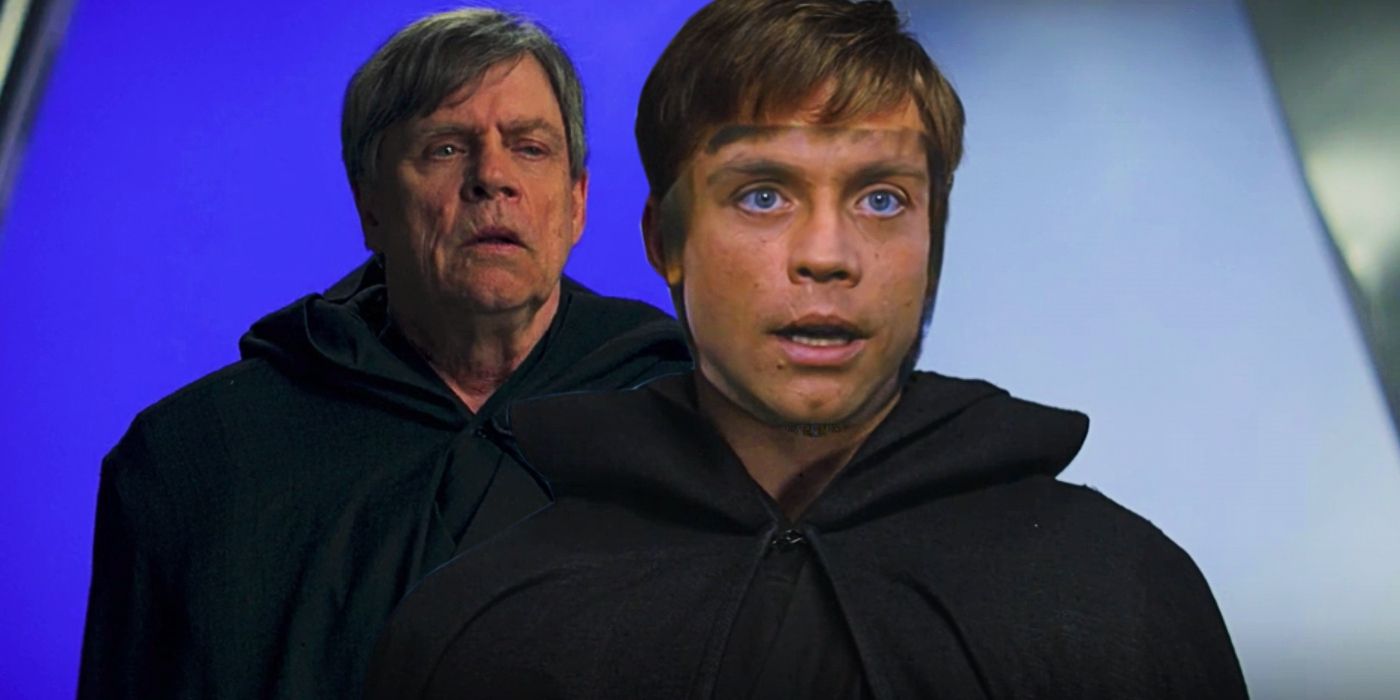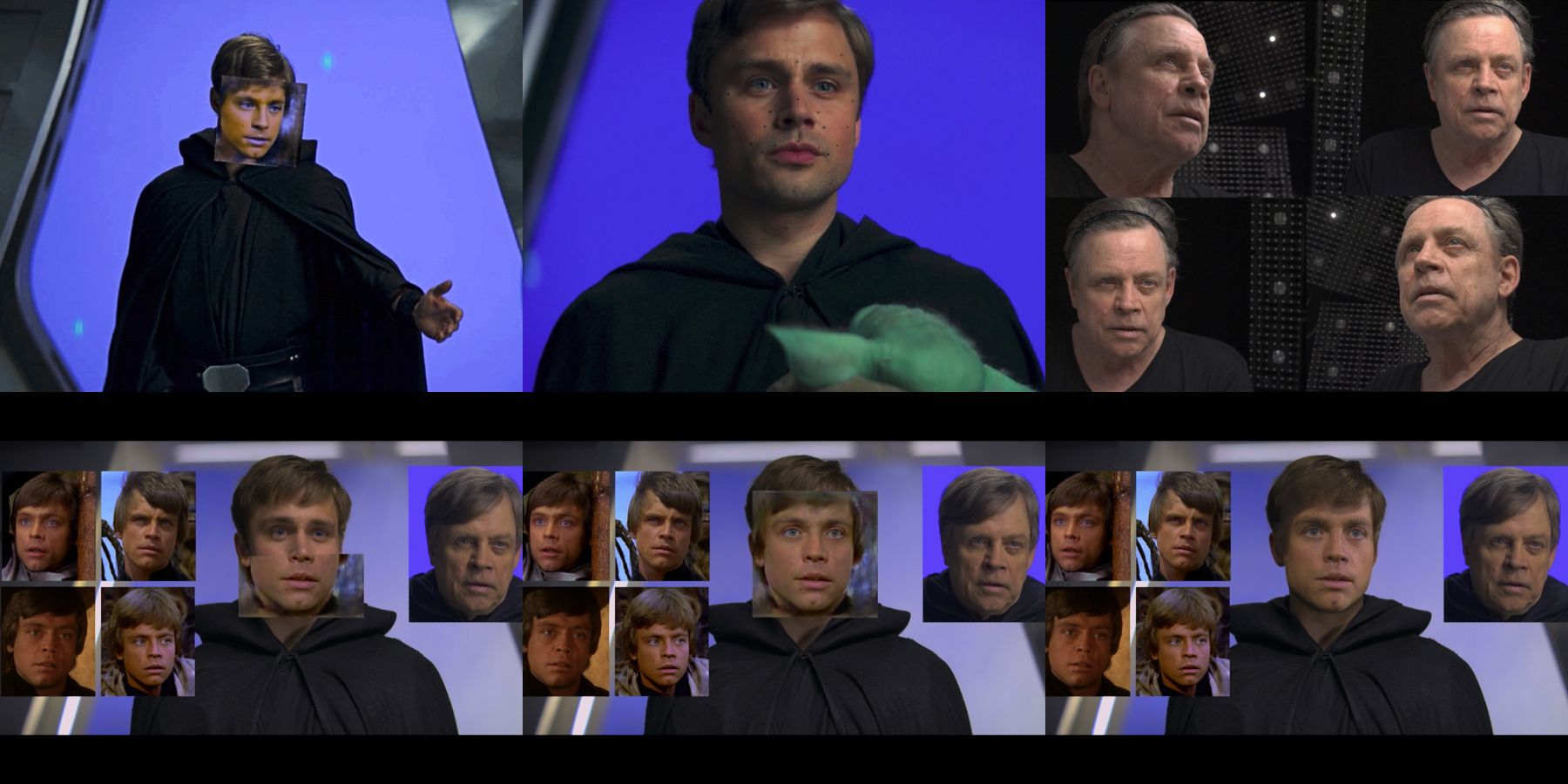
Star Wars has revealed just how Mark Hamill looks as Luke Skywalker in The Mandalorian season 2 finale without CGI, as well as the deep fake process considered to bring him back and how they ultimately de-aged him. Luke Skywalker's return in The Mandalorian was one of the biggest Star Wars moments since Disney purchased Lucasfilm, with the Jedi arriving to take Grogu away for training. It was made even more impressive by the fact that it was kept a secret, even despite Hamill himself returning to the role.
Of course, Hamill is now in his 60s, and so couldn't just play Luke post-Return of the Jedi. Instead, The Mandalorian used de-aging technology and a stand-in actor, Max Lloyd-Jones, in order to bring Luke back. The end result was somewhat divisive in terms of the visual effects, with some fans complaining of the uncanny valley appearance of Luke, but in terms of story Luke coming for Grogu worked perfectly.
Disney Gallery: Star Wars: The Mandalorian season 2, episode 2, "Making of S2 Finale," goes behind-the-scenes of Luke's return. The special documentary is all about what it took to bring both Luke and Hamill back, and as such it has a few reveals as to the process of digitally re-creating this character. That means getting to see Hamill himself standing uncloaked in The Mandalorian, rather than the de-aged Luke, but also images of the de-aging at various stages of development. The Mandalorian explored various methods of de-aging Luke, including using deep fake technology. For that, they pulled countless images and bits of footage not only of Luke in the original Star Wars trilogy, but also interviews from around the time, with Virtual Production Visualization Supervisor, Landis Fields, spending days on his own (for secrecy) trying to push deep fake as far as possible in order to use it for Luke. The documentary shows a lot of footage of this process, with images of young Luke overlaid over Hamill and Lloyd-Jones on set, to slightly uncanny effect.

Deep fake requires feeding in as many images and clips of a person as possible, so that a complete picture can be built up of a person's face - that needs to account not just for the actual look, but for all possible facial expressions, so that the AI can match what the actor is doing on set, and also things like lighting. While Lucasfilm explored the possibility extensively, it was ultimately decided to use more of the tried-and-trusted de-aging methods seeing across previous Marvel and Star Wars films, working with effects house Lola and combining Hamill's performance with Lloyd-Jones', with both of them acting on set so that Lloyd-Jones could perfectly match Hamill, and then using visual effects to make the younger actor look more like Luke Skywalker. That included Hamill filming twice - once on set, and a second time in a special lighting rig called The Egg, which allowed them to capture ultra high-res textures of his face and have control over lighting and positioning, and combining those performances with Lloyd-Jones to achieve the end product.
Having two actors does make it trickier - Marvel's best de-aging successes, for instance, have come when the same actor has been de-aged, like in Ant-Man, Captain America; Civil War, and Black Widow - and that's why there were ultimately some complaints about Luke in The Mandalorian, especially with his mouth movements not fully syncing up. But the documentary also shows that Hamill returning was a special moment, and that, even if the VFX wasn't perfect, it was worth it in order to have him return.
No comments:
Post a Comment